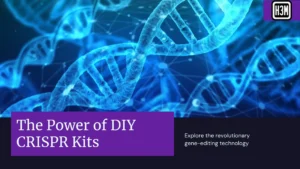The Malaria Vaccine Breakthrough represents a monumental step in medical science. This vaccine, the first ever for a parasitic infection, stands poised to save hundreds of thousands of lives annually, particularly in regions most affected by malaria.”
Development of the Malaria Vaccine Breakthrough
Malaria, a mosquito-borne disease, has plagued humanity for centuries. The development of a Malaria Vaccine Breakthrough has been a priority for global health organizations. The recent breakthrough in this field is the R21/Matrix-M vaccine, recommended by the World Health Organization (WHO) for the prevention of malaria in children. This follows the earlier recommendation of the RTS,S/AS01 vaccine in 2021. Both vaccines have shown to be safe and effective, particularly in protecting children in the African Region, where malaria’s burden is highest.
Efficacy and Impact
The R21 malaria vaccine’s efficacy is a beacon of hope in the long-standing battle against malaria. With an efficacy rate of 75% against symptomatic malaria, particularly when administered just before the high transmission season, R21 sets a new standard in malaria prevention. This rate is a significant improvement over existing interventions and places the vaccine at the forefront of malaria control strategies. Its cost-effectiveness is another highlight, with each dose estimated to cost between $2 to $4, aligning it with the affordability of other childhood vaccines and making it a viable option for widespread use in malaria-endemic regions.
The potential public health impact of the R21 vaccine cannot be overstated. It stands as a crucial tool that could save hundreds of thousands of young lives annually, particularly in Africa where the burden of malaria is heaviest. Dr. Tedros Adhanom Ghebreyesus, the Director-General of the World Health Organization (WHO), has emphasized the vaccine’s critical role in fulfilling the growing demand for effective malaria prevention and in propelling the world closer to a malaria-free future.
Malaria Vaccine Breakthrough: Challenges and Future Directions
Despite the groundbreaking development of the R21 vaccine, challenges in implementation and distribution persist. The surge in demand for the vaccine, especially in the wake of limited supplies of the RTS,S vaccine, calls for strategic and efficient distribution plans. These plans must prioritize the most vulnerable populations and ensure equitable access across different regions.
The road ahead also involves continuous research and development to further enhance the vaccine’s efficacy and longevity. Addressing potential resistance to the vaccine is paramount to maintain its effectiveness. This requires sustained international collaboration and funding, particularly to support resource-limited settings where the burden of malaria is highest.
The need for a robust global health infrastructure to support the widespread roll-out of the vaccine is evident. This includes strengthening local healthcare systems, ensuring an adequate supply chain, and enhancing community awareness and acceptance of the vaccine. The international community’s role in supporting these efforts through funding and technical assistance will be critical in ensuring the successful implementation of the malaria vaccination programs.
The advent of the R21 Malaria Vaccine Breakthrough is a watershed moment in global health, signaling a new era in the fight against one of the world’s most deadly diseases. This breakthrough reflects the remarkable potential of scientific innovation to address complex public health challenges and offers a beacon of hope to millions at risk of malaria. It is a testament to the resilience and dedication of the global health community, which has remained steadfast in its pursuit of solutions to combat malaria.
As the world prepares for wider implementation of the vaccine, it is crucial to recognize the importance of global cooperation, sustained funding, and community engagement in this endeavor. The malaria vaccine not only represents a significant scientific achievement but also embodies the collective aspiration for a healthier, malaria-free world. Its success will depend not just on the vaccine itself but on the collective will and action of the global community to ensure it reaches those who need it most.
References:
- World Health Organization. (2024). “WHO recommends R21/Matrix-M vaccine for malaria prevention.” https://www.who.int/news/item/02-10-2023-who-recommends-r21-matrix-m-vaccine-for-malaria-prevention-in-updated-advice-on-immunization
- Gavi, the Vaccine Alliance. (n.d.). Five things you need to know about the new R21 malaria vaccine. Retrieved March 19, 2024, from https://www.gavi.org/vaccineswork/five-things-you-need-know-about-new-r21-malaria-vaccine
- University of Oxford. (2024, February 2). R21/Matrix-M™ Malaria Vaccine Phase 3 Trial Results Published in The Lancet. Novavax. Retrieved March 19, 2024, from https://ir.novavax.com/news-releases/news-release-details/r21matrix-mtm-malaria-vaccine-phase-3-trial-results-published
To Learn More:
The Impact of AlphaFold2 on Protein Folding: Revolutionizing Biology and Medicine
Transforming Lives: Revolutionary Bioprinting and Genetic Engineering of Organs





